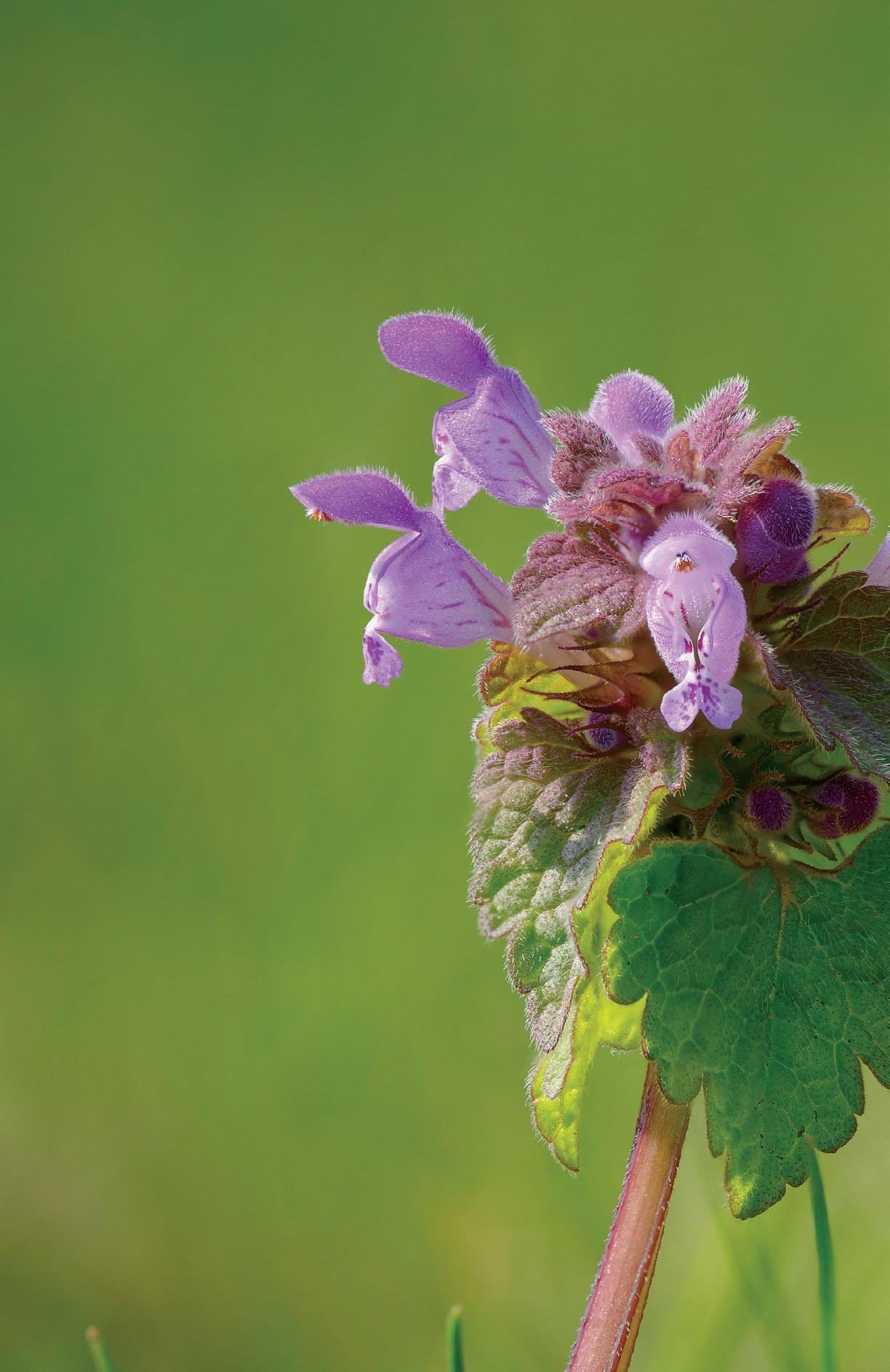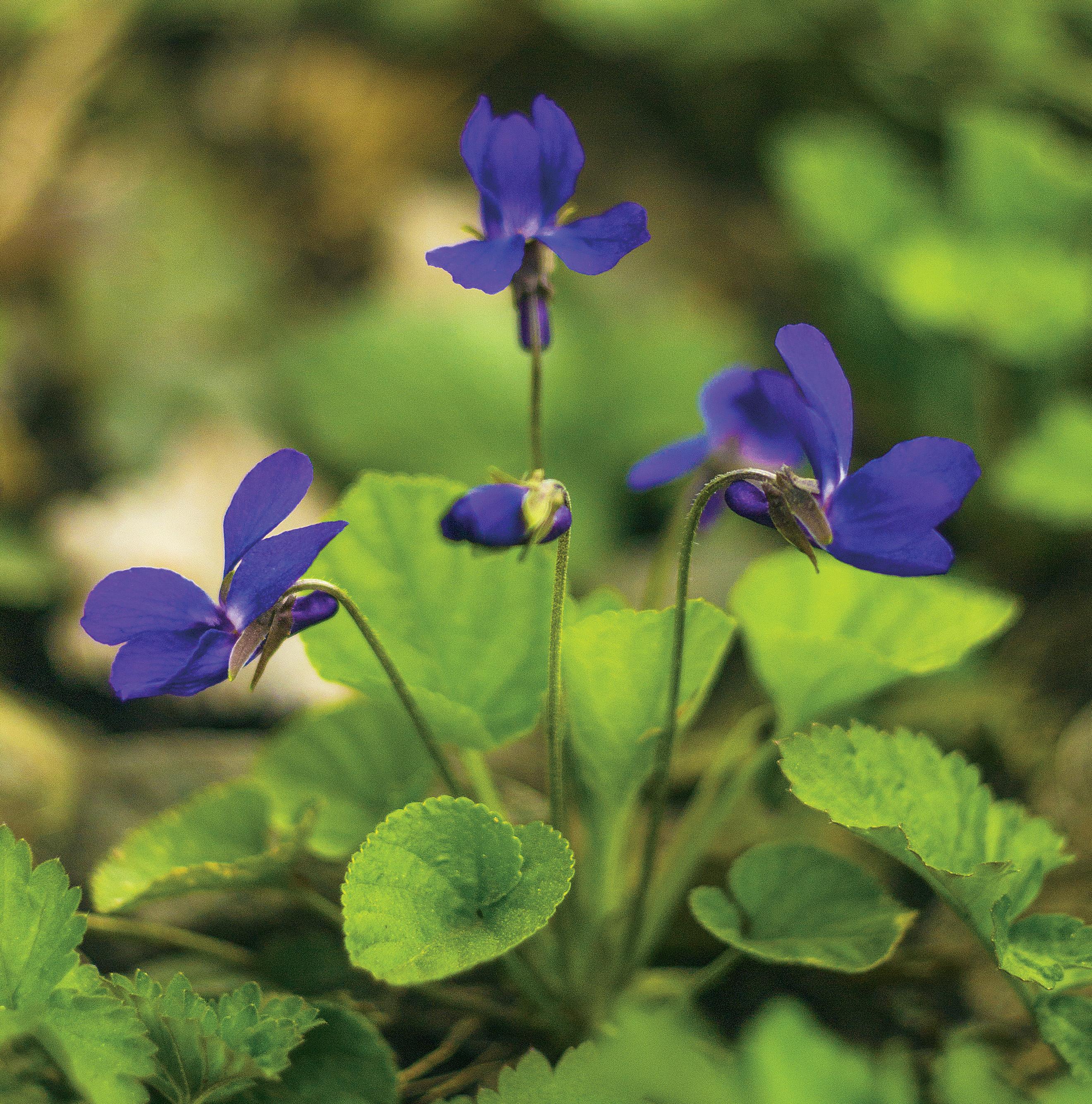
8 minute read
An Overview of Postemergence Growth Regulator Herbicide Use in Turfgrass
By Jeffrey Derr, Ph.D., Professor of Weed Science, Virginia Tech
Annual and perennial broadleaf weeds are management issues for those maintaining turfgrass, be it golf courses, sports turf, residential or commercial lawns, and roadside turf, among other areas, as well as in sod production. A common way that broadleaf weeds are controlled in turfgrass situations is through the use of postemergence herbicides, generally through the use of growth regulator herbicides. Although most of the available chemicals in this group were commercialized years ago, there is one new herbicide to discuss in the growth regulator group. With the availability of a number of active ingredients, most broadleaf weeds can be selectively controlled in warm and cool-season turf. Use of postemergence herbicides allows for spot treatment instead of broadcast applications, especially for perennial weeds that often occur in clumps. A downside to postemergence herbicide use is that it may take a while after application for the weeds to die off. Henbit, for example, is one species that goes out slowly. Also, application of a postemergence herbicide results in dead weed foliage, which can be unsightly. Preemergence herbicides control weeds before they are established, avoiding this issue. Most preemergence herbicides, however, are ineffective against perennial weeds, while there are effective postemergence herbicides for perennial broadleaf weeds.
Advertisement

Henbit, a common winter annual weed.
A. Available active ingredients
There are multiple herbicides in the growth regulator class. They are sold individually or more commonly in combinations with other growth regulator herbicides. The list includes subgroups: phenoxies [2,4-D, 2,4-DP (also referred to as dichlorprop), MCPP (also referred to as mecoprop), and MCPA], benzoic acids (dicamba), pyridines (triclopyr, fluroxypyr), and the newest addition halauxifen in the picolinic acid group. These herbicides all have the same mode of action and act as synthetic auxins. Natural auxins in plants, such as IAA, are involved in root and shoot development. The synthetic auxins promote uncontrolled cell growth, plugging vascular tissue. This explains the wilted appearance of injured broadleaf plants from this class of herbicides.
The herbicide 2,4-D was discovered in the 1940s and found to selectively control broadleaf weeds in grass crops. The term 2,4-D refers to the chemical structure, which is 2,4-dichlorophenoxy acetic acid. A closely related structure is 2,4-DP, which is 2,4-dichlorophenoxy propionic acid. Companies, once they identify an active molecule, will test variations to that structure, either to improve control, broaden the spectrum of control, or to improve crop safety. The herbicide 2,4-D effectively controls dandelion, plantains, bittercress, and wild carrot, while relatively ineffective for controlling common chickweed, India mock strawberry, prostrate knotweed, white clover, Virginia buttonweed, yellow woodsorrel, and wild violet. Other herbicides are generally added to 2,4-D to improve control of these species. Adding MCPP to 2,4-D, for example, improves control of common chickweed and white clover compared to 2,4-D alone.
These herbicides are systemic, meaning they move throughout the plant after being absorbed. These compounds are both leaf and root absorbed, although leaf uptake is the best target for applicators. Granular formulations of these herbicides can control weeds. Ideally these granular forms are applied when there is dew on the weed foliage so that the granules stick and there is some leaf uptake. In general, sprayed applications of these herbicides work better than granular formulations. Granular formulations eliminate the issue of spray drift onto sensitive broadleaf crops, though. Granular formulations can still damage vegetables and ornamentals through root uptake. We suggest using a separate sprayer for turf applications as this class of herbicides is hard to clean out and low levels could injure ornamentals if the sprayer was also used to apply a fungicide or insecticide to trees, shrubs, or flowers.

Wild violet, one of the hardest to control perennial broadleaf weeds.
B. Formulation
These active ingredients are sometimes available as the parent acid, but usually are formulated as either an ester or as an amine salt. Ester formulations, being lipophilic or fat loving, penetrate better through the waxy layer on leaf surfaces, resulting in better herbicide absorption and therefore better weed control. So why use any other formulation? Esters are more volatile and thus more likely to drift as a vapor, potentially damaging sensitive broadleaf plants such as tomatoes, cucumbers, marigolds, and other desired broadleaf vegetables, flowers, trees, and shrubs. Volatility is driven by higher temperatures so there is less risk of offsite damage during cooler times of the year. Since deciduous trees and shrubs have dropped their leaves, late fall through early spring are good times to use an ester formulation as they are less likely to be damaged from vapor drift than during periods of active growth. Also, summer annual vegetables and bedding plants are not in the landscape during this time. So esters are the preferred formulation during the cooler months of the year. Under warmer times of the year, one should consider only spot application of these formulations or consider use of an amine if a broadcast treatment is needed.
Some examples of products that utilized ester formulations include Turflon Ester (triclopyr), Super Trimec (ester forms of 2,4-D and 2,4-DP), Speedzone Broadleaf Herbicide (ester of 2,4-D), 4-Speed XT (ester forms of 2,4-D and triclopyr), and Cool Power (esters of MCPP and triclopyr).
Amine formulations have lower volatility so they are less likely to drift as a vapor and therefore less likely to injure sensitive broadleaf crops. Amines are therefore the preferred formulation during late spring through early fall. They are more water soluble, so they do not penetrate the waxy layer on leaves as readily as ester forms.
Some examples of products that use amine forms include Triplet SF (amine salts of 2,4-D, MCPP, and dicamba), Surge (amine salts of 2,4-D, MCPP, and dicamba), Horsepower (amine forms of MCPA, triclopyr, and dicamba), Triamine (amine forms of 2,4-D, MCPP, and 2,4-DP), and Trimec Classic (amine forms of 2,4-D, MCPP, and dicamba).
Chemical companies, through biotechnology, have developed soybean lines resistant to 2,4-D and dicamba to control weeds that have developed resistance to glyphosate. Drift of 2,4-D or dicamba poses a significant risk to other broadleaf crops so companies have developed formulations with reduced volatility. This technology is working its way into the turf market. One example is 2,4-D choline, which is a component of the herbicide GameOn being developed by Corteva. Keep in mind, though, that even if an herbicide has low volatility and thus not likely to result in vapor drift, it can still injure plants through spray drift.
C. Combinations
Generally, this class of chemistry is applied as a combination of active ingredients. This is done to broaden the spectrum of control. For example, adding dicamba to 2,4-D improves control of weeds like prostrate knotweed or white clover compared to 2,4-D applied alone. A common mixture are the 3-ways — often 2,4-D plus MCPP plus dicamba, such as Trimec Classic. If one prefers not to use a product containing 2,4-D, there are alternatives, such as Powerzone (carfentrazone plus MCPA plus MCPP plus dicamba). Since each of these herbicides controls a slightly different weed spectrum, different combinations will vary in their effectiveness on a given weed species. In Virginia Tech’s Pest management Guide for Horticultural crop (https://www.pubs.ext.vt.edu/ 456/456-017/456-017.html), the effectiveness of various combinations on common turf weeds are listed.
A new combination is GameOn, which is a combination of halauxifen (also referred to as Arylex), 2,4-D, and fluroxypyr. Other formulations being tested that have this new active ingredient include Relzar, which combines halauxifen with florasulam, the active in Defendor and Switchblade, a combination of halauxifen, fluroxypyr, and dicamba.
One more use of combinations is the addition of a contact herbicide to increase the speed of action. These contact herbicides include carfentrazone-ethyl, sulfentrazone, flumioxazin and pyraflufen-ethyl. These have a different mode of action from the growth regulator herbicides as they inhibit the Protox enzyme and are referred to as PPO inhibitors. These PPO inhibitors have limited movement in plants after foliar uptake due to their rapid contact action. These PPO inhibitors are in general more effective on broadleaf weeds than grasses. These herbicides are sold by themselves: carfentrazone-ethyl is sold as QuickSilver, sulfentrazone as Dismiss, and flumioxazin as SureGuard. So, one can add one of these contact herbicides to a formulation containing just growth regulator herbicides. For example, one could add QuickSilver to Trimec Classic.
One can purchase premixes as well. For example, Speedzone is a mixture of carfentrazone plus 2,4-D, MCPP, and dicamba, Surge is a mixture of sulfentrazone plus 2,4-D, MCPP, and dicamba, 4-Speed XT is a combination of pyraflufen, 2,4-D, triclopyr, and dicamba, and SurePower is a combination of flumioxazin, 2,4-D, fluroxypyr, and triclopyr. In these cases, we have turned a 3-way into a 4-way product. Another type of combination is the addition of an herbicide for crabgrass control to the growth regulator herbicides. One common addition is quinclorac, which is sold by itself as Drive. One combination is Q4 Plus, which is a mixture of quinclorac, sulfentrazone, 2,4-D, and dicamba. As with the addition of a contact herbicide, Drive could be added to a product containing only growth regulator herbicides. Another available combination is the addition of fenoxaprop, the active ingredient in Acclaim Extra, with fluroxypyr and dicamba in the product Last Call.
D. Turf safety
Established tall fescue, perennial ryegrass and Kentucky bluegrass generally have good tolerance to the growth regulator herbicides. Established generally means at least three mowings for a new seeding. Bentgrass and St. Augustine have less tolerance to this group so one needs to use products labeled for these species and follow label directions, which often involve using lower application rates of these herbicides compared to that used for other turfgrasses. Bermudagrass and certain other warm season turf species can be injured by products containing triclopyr or fluroxypyr. Check the label to make sure the turf species you are maintaining can be treated with a given product.
E. Summary
The growth regulator herbicides are systemic in plants and used for control of annual and perennial broadleaf weeds. They are usually sold as combinations using two or three of the active ingredients on this class. Contact herbicides are added to increase the speed of action. Choose the appropriate herbicide for the turf species being treated. Mention of trade names are for information purposes only and not to discriminate against products not mentioned.






